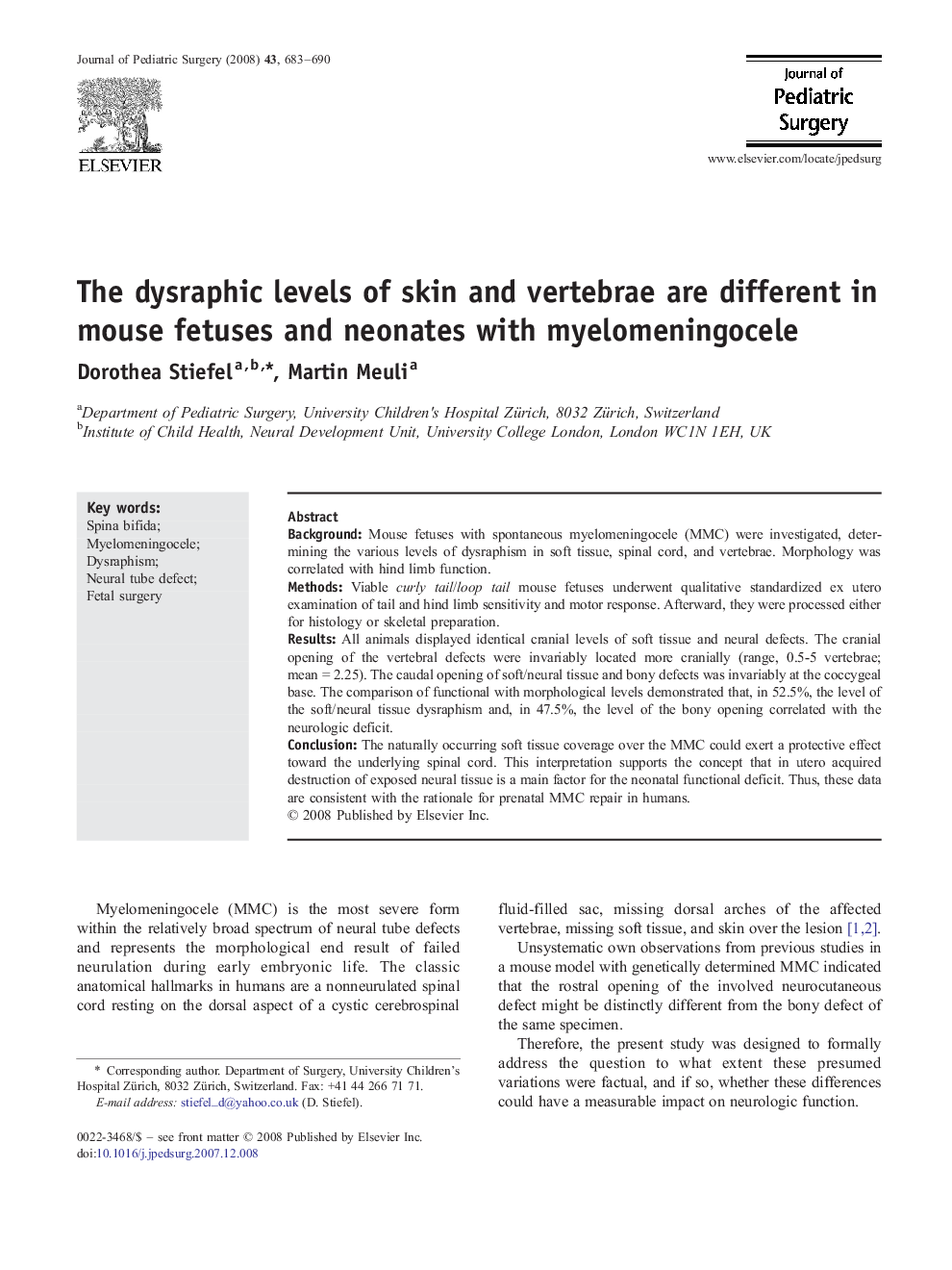| کد مقاله | کد نشریه | سال انتشار | مقاله انگلیسی | نسخه تمام متن |
|---|---|---|---|---|
| 4159429 | 1273826 | 2008 | 8 صفحه PDF | دانلود رایگان |

BackgroundMouse fetuses with spontaneous myelomeningocele (MMC) were investigated, determining the various levels of dysraphism in soft tissue, spinal cord, and vertebrae. Morphology was correlated with hind limb function.MethodsViable curly tail/loop tail mouse fetuses underwent qualitative standardized ex utero examination of tail and hind limb sensitivity and motor response. Afterward, they were processed either for histology or skeletal preparation.ResultsAll animals displayed identical cranial levels of soft tissue and neural defects. The cranial opening of the vertebral defects were invariably located more cranially (range, 0.5-5 vertebrae; mean = 2.25). The caudal opening of soft/neural tissue and bony defects was invariably at the coccygeal base. The comparison of functional with morphological levels demonstrated that, in 52.5%, the level of the soft/neural tissue dysraphism and, in 47.5%, the level of the bony opening correlated with the neurologic deficit.ConclusionThe naturally occurring soft tissue coverage over the MMC could exert a protective effect toward the underlying spinal cord. This interpretation supports the concept that in utero acquired destruction of exposed neural tissue is a main factor for the neonatal functional deficit. Thus, these data are consistent with the rationale for prenatal MMC repair in humans.
Journal: Journal of Pediatric Surgery - Volume 43, Issue 4, April 2008, Pages 683–690